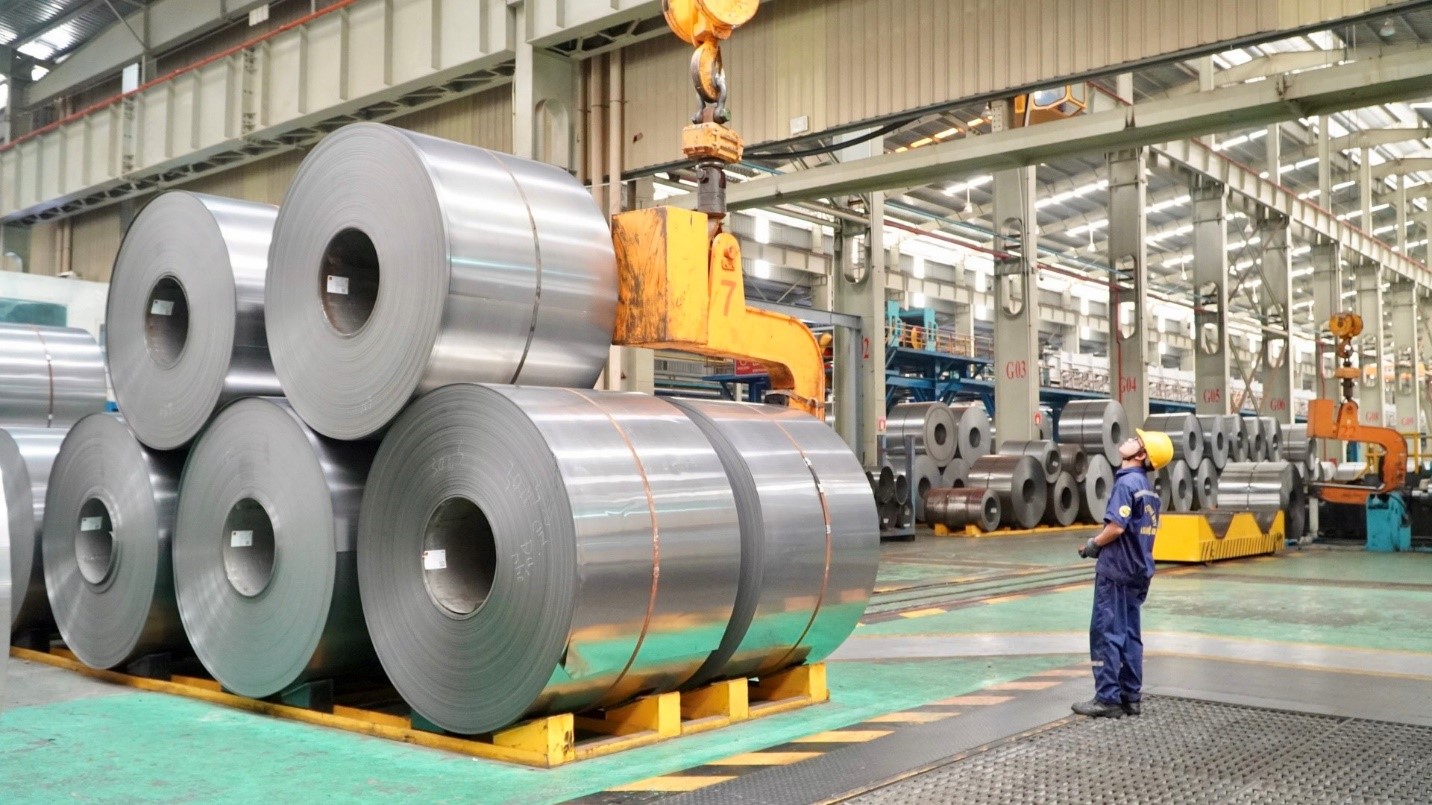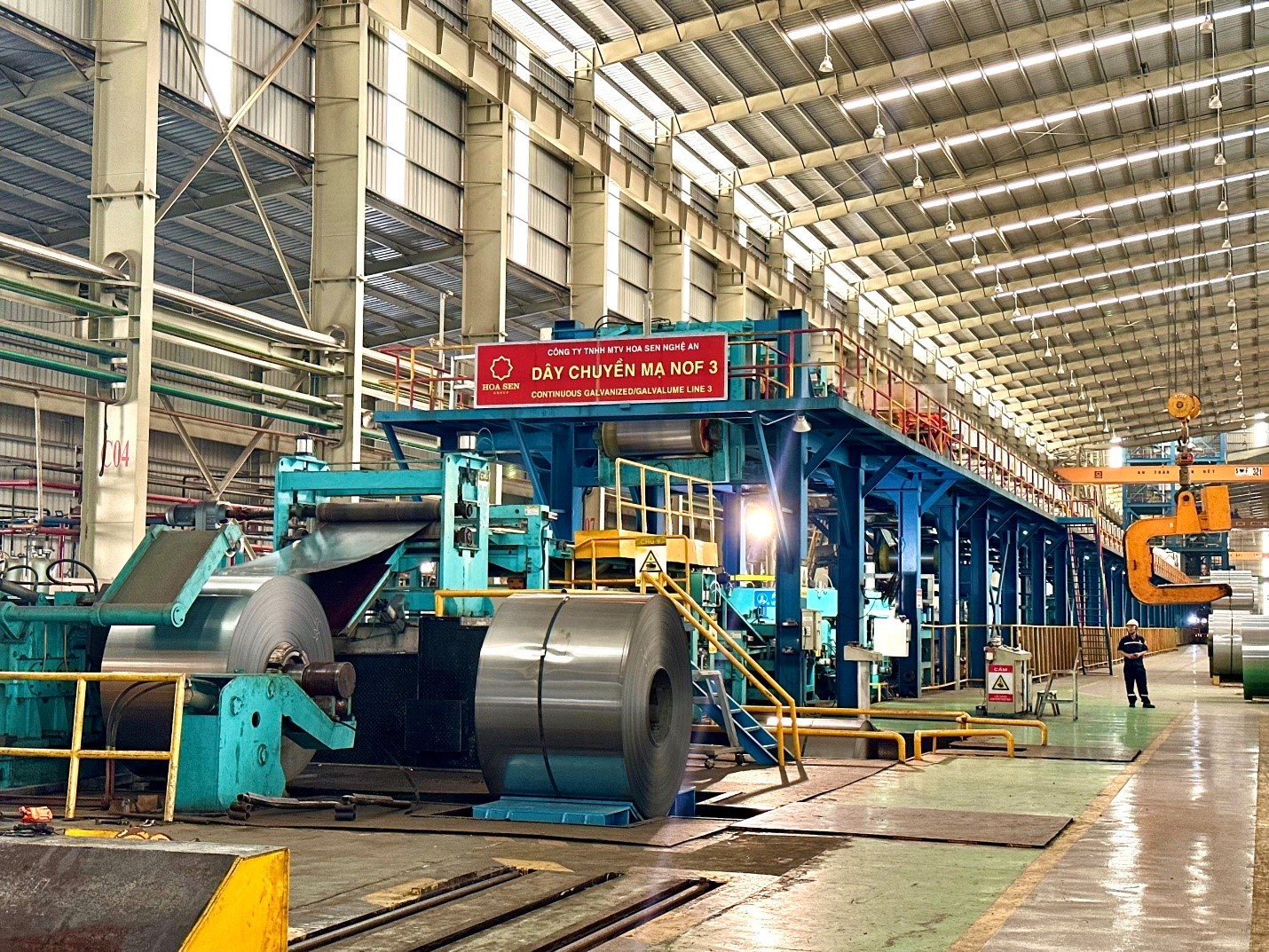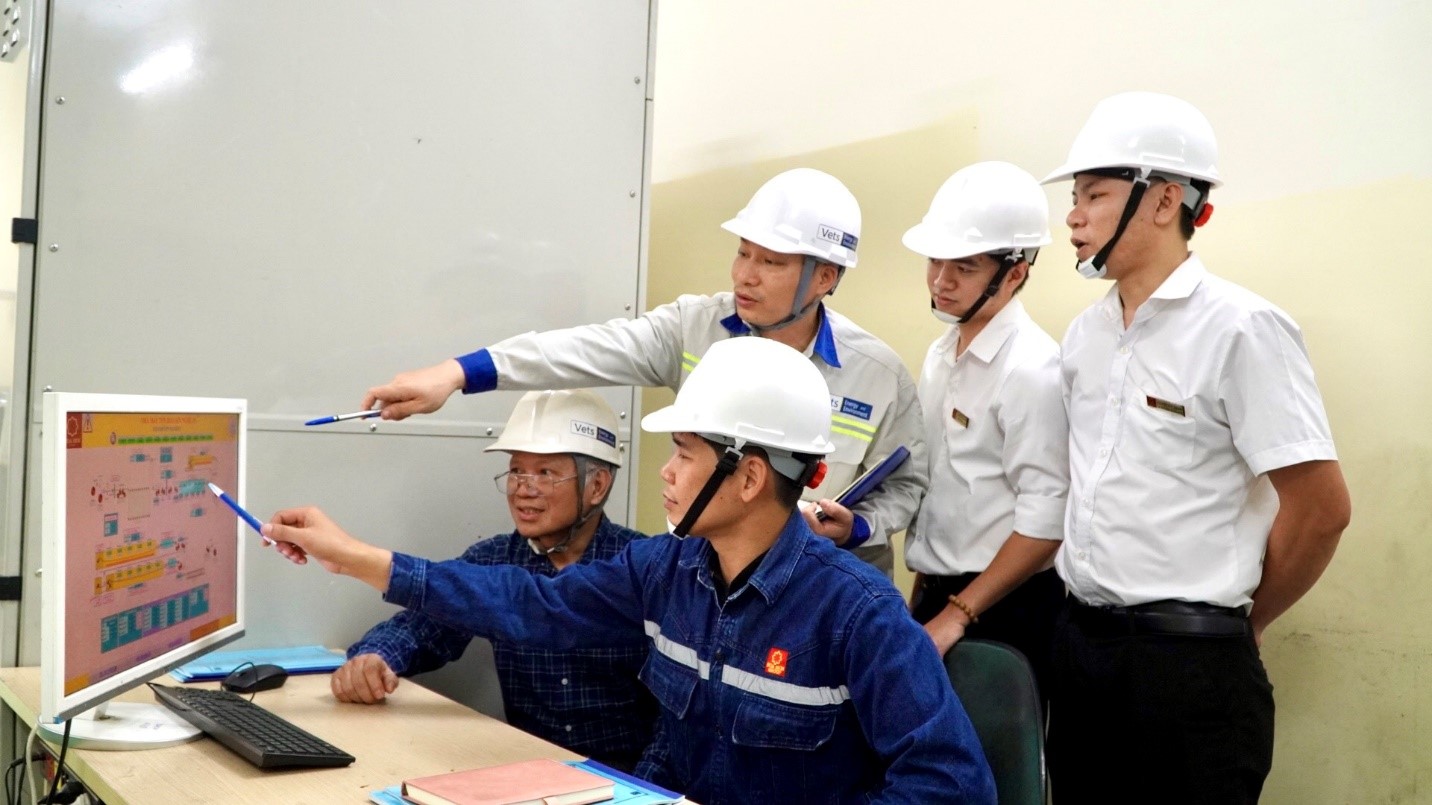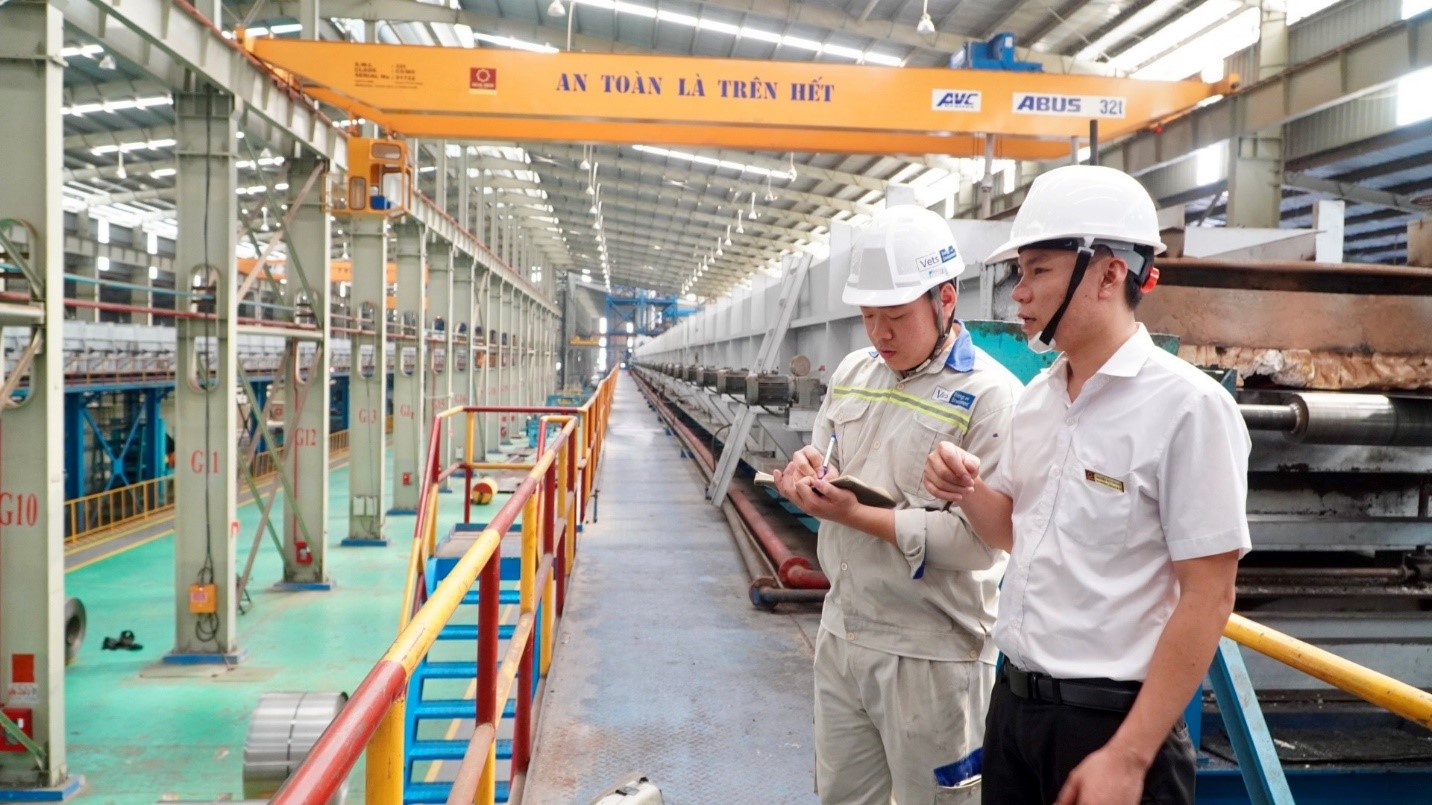This company is a member of the Hoa Sen Group and has been operational since 2016, specializing in producing galvanized and pre-painted steel with a capacity of 1 million tons per year. The plant boasts the most advanced galvanizing technology in Vietnam and Southeast Asia, producing products that meet international standards such as ASTM A792 of the USA, AS 1397 of Australia, JIS G 3321 of Japan, EN10346 of Europe, and other stringent standards for various demanding export markets.
During production, the plant consumes a significant amount of electricity, LPG, and DO oil... Therefore, applying energy-saving measures in many production stages is a primary focus of the company.

Corrugated metal products after the thin-rolling process at Hoa Sen Nghe An Factory.
Mr. Hoang Ngoc Quan, Deputy Technical Director at Hoa Sen Nghe An, stated that the company recognizes energy management and electricity savings as key issues to reduce production costs and increase competitiveness. Consequently, the company's leadership has implemented regulations such as electricity consumption norms for production lines, rules for switching on/off auxiliary equipment (lighting systems), temperature regulations for electrical rooms, and pressure settings for compressed air systems.
Hoa Sen Nghe An owns the most advanced plating technology line currently in Vietnam and Southeast Asia
Mr. Nguyen Duy Trong, Acting Head of the Electrical Engineering Department, shared that over the years, the technical team has invested in research and applied new technologies to optimize energy consumption, contributing significantly to enhancing business efficiency.
For example, the energy consumption costs for Hoa Sen Nghe An in 2023 were over 280 billion VND, with the galvanizing process accounting for approximately 60-70% of the total electricity consumption of the plant. To reduce electricity usage, the plant has optimized the production process by strictly regulating the heating temperature in the galvanizing process.
Moreover, the plant has installed variable frequency drives to automatically control the speed of fans and cleaning motors in line with production processes. This solution has helped the company save 800.352 kWh per year, equivalent to over 1.36 billion VND per year.
In the cooling pump and equipment area, the company installed PLCs, HMI, and wrote automatic control programs for cooling fans based on set temperatures, saving electricity, reducing equipment wear and tear, and stabilizing cooling temperatures. This solution has enabled the company to save 661.859 kWh per year, equivalent to nearly 1.1 billion VND per year.
SCADA monitoring system in the production line.
In addition to cost-effective solutions, the company also implements various initiatives to raise awareness among employees about energy-saving and efficient practices, such as issuing documents and regulations on energy use, organizing training sessions, and sending energy management staff to specialized energy-saving seminars, with maintenance teams conducting daily patrols to identify and promptly address any leaks.
Sharing about plans for enhancing energy efficiency, Mr. Hoang Ngoc Quan mentioned, "In May 2024, the company conducted an energy audit in cooperation with the Ministry of Industry and Trade and the Korean Energy Agency. Following the energy audit, Hoa Sen Nghe An hopes to gain a clearer understanding of its energy use and consumption in production activities. Based on the audit results and experts' evaluations, the company will identify the most optimal solutions to continue implementing energy-saving measures in the future."
Mr. Nguyen Duy Trong (right) discusses the technology used during the energy audit at the plant.
Energy saving has indeed proven to be effective for steel industry enterprises. Managing and innovating energy-saving technologies is crucial for these companies to reduce costs, lower product prices, and enhance competitiveness.
According to the Ministry of Industry and Trade, the industrial sector accounts for over 50% of the total national energy consumption, with a potential for energy-savings of 30-35%. Therefore, the deployment of energy-saving solutions by manufacturing companies not only helps save investment costs and reduce operational expenses but also plays a significant role in the country's socio-economic development.
Duc Do












 Webinar 2: “Financial Support for Energy Efficiency Enterprises – Opportunities and Challenges”
Webinar 2: “Financial Support for Energy Efficiency Enterprises – Opportunities and Challenges”
 Vietnamese enterprises achieve green growth and cut costs through energy efficiency
Vietnamese enterprises achieve green growth and cut costs through energy efficiency
 Capacity Building for Program Implementing Entity
Capacity Building for Program Implementing Entity
 Enhance Energy Efficiency Knowledge for Managers of Cement Industrial Enterprises
Enhance Energy Efficiency Knowledge for Managers of Cement Industrial Enterprises
 Capacity building for participating financial institutions in Ho Chi Minh City
Capacity building for participating financial institutions in Ho Chi Minh City
 Strengthening capacity for energy management officers of local government agencies
Strengthening capacity for energy management officers of local government agencies
 Steel Enterprises Saving Energy and Enhancing Competitiveness
Steel Enterprises Saving Energy and Enhancing Competitiveness